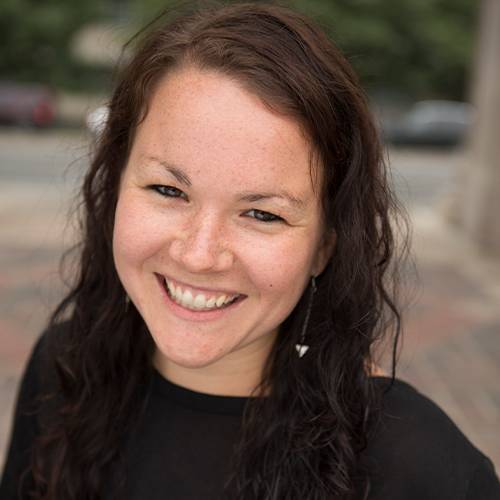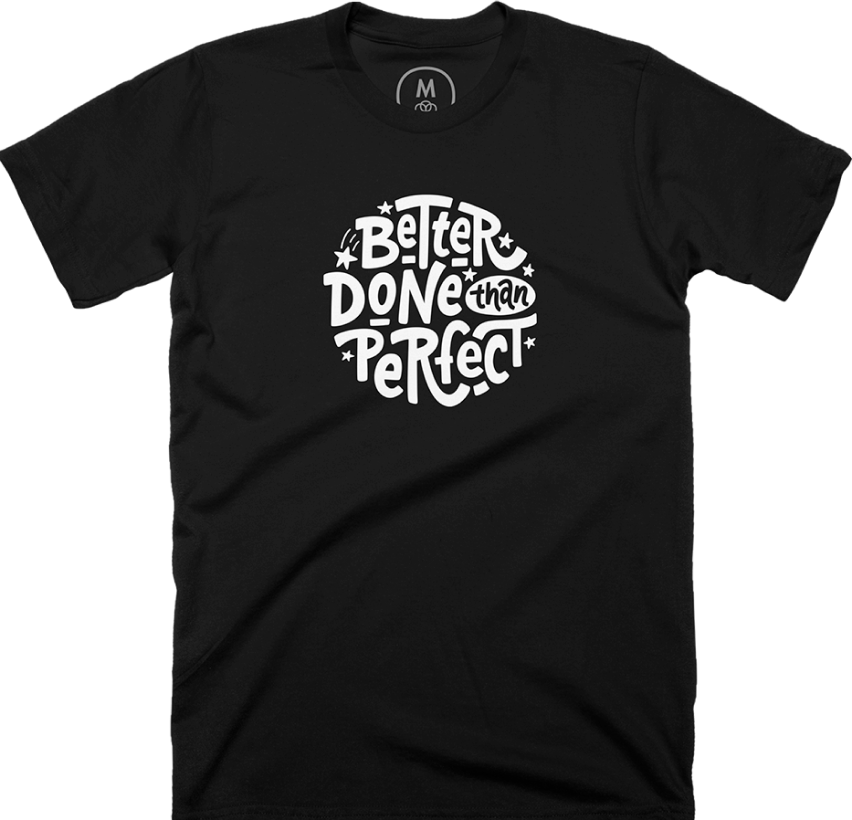Megan McMullin, customer onboarding specialist at MeetEdgar, is helping customers get value out of their social media management software. In this episode, she and Jane of Userlist discuss MeetEdgar’s philosophy on customer support, and how that has evolved over the years. Megan reveals how they have scaled customer support at MeetEdgar to reach the needs of a growing community, while remaining “the best friend” for their users. Lastly, they discuss tools and strategies for content creation.
Evolution of customer support at MeetEdgar
Megan is the customers’ best friend at MeetEdgar, or, more officially, the Customer Onboarding Specialist. She has been learning in this role for the last four years and works with Kristina Quinones, the Customer Experience Director, who we’ve had on the show previously.
The duo shifted focus from email to video-focused group support. This had a great impact on community building — a community that would go on to become a strategic advantage for MeetEdgar:
“It wasn’t that they wanted help necessarily only through email, which was the support that we used to offer. But the more we started testing other ways of connecting with our community, the more we found that it was more helpful for retaining customers more, and really bringing in this community aspect. We do work with small businesses, and a lot of small businesses and solopreneurs are stuck at home working by themselves.”
Spending so much time talking to customers on video helped them focus on their audience persona, and allowed Megan to develop her current role. As MeetEdgar is still a small team, she gets to work closely with other departments. On the marketing side, the customer support experience comes in handy:
“I actually write a lot of our marketing emails, which is helpful because I know the language that people use when they describe their problems in the inbox, or their pain points and frustration.”
On the product side, being on customer support allows Megan to inform designs, and test features through the lens of the customer. Overall, this results in a more user-friendly app.
Work environment: autonomy, learning, values
Thanks to their founder Laura Roeder, the working environment allowed for Megan’s role to blossom:
“Here at MeetEdgar, we’re pretty lucky in that our founder has a really strong belief in, ‘you should hire great people and give them the autonomy to do what they do.’ She also really believes in the fact that you know, we’re an important business, but we’re an experimental business. So if something doesn’t work, that doesn’t mean you failed at your job. That means you learned from it. One of our core values here at MeetEdgar is ‘make new mistakes’.”
Feeling supported, Megan has enjoyed the freedom to evolve support from email, to one-on-one demos, to finally the “office hours” that she holds now. These office hours allow for one-to-many video support — Megan connects with customers intimately, but still in a scalable way.
Video-based approach to customer support
MeetEdgar engages in several types of calls. First, are the daily office hours that typically consist of just a handful of participants. The goal is to help customers get value early inside of MeetEdgar:
“Sometimes they just want a full demo. Sometimes you just have a couple of questions that are hard to communicate over email.Having the ability to screen share and show people exactly how to do something is a really great way to increase people’s ability to get their first win with our software, that much faster.”
One-on-one demos still exist to include customers who can’t make office hours.
Their famous content batching parties are focused on efficiency, with the goal of creating some stickiness:
“Batching is an amazing strategy that can help save people up to eight hours a week on content creation. So again, if we teach people how to actually create their content and put it into our software in the most efficient way possible, they’re going to be more likely to stay with our software.”
Virtual coworking time is hosted once a month, and provides the chance for members of the community to join and get some “heads-down work” in. Finally, partner webinars are hosted monthly around specific topics. They allow MeetEdgar to collaborate with other software providers, and bring new email subscribers for their list.
Building partner relationships
Jane and Megan dive deeper into the discussion around the joint webinars. These webinars are meant to bring in potential new customers, but they also need to be pitched to the partner companies.
What is a valuable part of that pitch? The attendees, as Megan describes, when she makes contacts with potential partners:
“The best value is that we give them the email list after the webinar, which is typically 800 to 900 registrations. They can now add that email list into their marketing. So that’s a huge thing. And I usually lead off my emails with that, making sure that they understand, ‘I’m not just asking for your time, I’m going to give you something in return’.”
Additionally, she sweetens the deal with social ad spend reimbursement, so that the partner company can get the word out for the webinar more broadly.
This way, you attract warmer leads by leveraging the trust that users already have with other companies, companies that might pair well with MeetEdgar. When Megan is reaching out, she is looking for long-term collaboration, not just a superficial partner relationship:
“With Demio, the software we use for our webinars, we’ve done webinar exchanges. We’ve done podcast exchanges with them, and we’ve done blog post exchanges with them over the last four years, multiple times. It’s a great way to support each other’s community. Make sure you’re researching companies who you think you can have that long-term partnership with, and grow together. That’s a strong goal for me when I’m looking into the people to email.”
Efficiently assisting customers
Megan makes a great point:
“We live in an age when people would rather have self-help than reach out. It’s a lot faster. It’s a lot easier for them just to do it in the timeframe that they have allotted.”
Directing customers to prerecorded explainer videos and self-help articles is a great way to enable self-help, but creating that kind of content takes time. As Jane describes, recording those videos can be an intimidating task. Megan’s advice on this? Better done than perfect:
“The name of your podcast speaks to this perfectly — done is better than perfect. If you make a little slip-up, just keep going. If it’s not major, if you just stutter a little bit, no one’s going to care. I like doing explainer videos on Loom, just because it’s an easy way to get my face in the corner, so that I’m not just doing a screen share without any human connection on it. And Loom has some really great features, like pausing the recording.”
On the production side of things:
“I try to sit in front of a window, and I have a small, little ring light that I use just to brighten things up a little bit. All that you need is that natural lighting. And then just the mindset that you’re really talking to one person. Sometimes we can get a little nervous with these videos being like, ‘Oh my gosh, hundreds of people are going to watch this, I have to be perfect.’ Just get that out of your head, and really remind yourself you’re speaking to your one ideal audience member.”
Lead magnets
MeetEdgar has found that two types of lead magnets in tandem work best: one that requires using a trial, and another that doesn’t. A lead magnet that does require a trial might be one of the monthly challenges that the team runs with a coupon code. Overall, requiring a trial may limit the people coming in on that magnet, but it ensures they start a trial:
“The challenges are really oriented with getting MeetEdgar set up. The goal is to bring those people in, who might be on the fence: ‘You know, I’ve tried software in the past. It was just too hard to set up. I don’t know how to do it.’ Again, just think what your customer might be thinking, in order to produce a lead magnet that’s going to actually convert them into a paying customer.”
Ones that don’t require a trial might come from a blog post:
“Let’s say we write a blog post about Instagram stories and why you should use them. At the end of that blog post, we’re going to put a download for templates people can use for Instagram stories. Because, what’s the question they’re asking themselves after they finished that blog post? The question is, ‘Okay, how do I actually create these stories?’”
Tools
Megan’s favorite tools besides Demio for webinars? On the content creation side, she uses StreamYard every day for streaming seamlessly to multiple platforms at once. Intercom is a good fit for MeetEdgar when it comes to inbox management, live chat, webinar follow-ups, and social media messages. “And then of course we use Slack every day”, she says. Slack serves as a great place for sharing information so that it can be repurposed elsewhere by the marketing team, for example. MeetEdgar also uses product management tools like Asana and Trello for task and product management.
Jane adds that they’ve been using Pitch for presentations and Livestorm for webinars at Userlist.
Final advice
Do keep the customer at the center, celebrate customer communication, and create a welcoming community:
“I think kind of the best advice I can give is just to make sure you’re always making the customer the center of it. And reminding yourself that, I always like to take the vantage point that if people are writing in to us, that’s like a good way for me to be able to connect with them. Oftentimes the metrics on customer support teams are like, we want the lowest ticket volume, but here at MeetEdgar, we take that opposite approach. That we want our community to write into us a lot. We want to have that connection that even if they’re just writing in to tell us about a success they had, which we get a lot, we’re going to celebrate with that with them.”
Don’t strive to be perfect:
“No one wants you to be perfect on screen. That’s not relatable.”
Thanks for listening! If you found the episode useful, please spread the word on Twitter mentioning @userlist, or leave us a review on iTunes.


